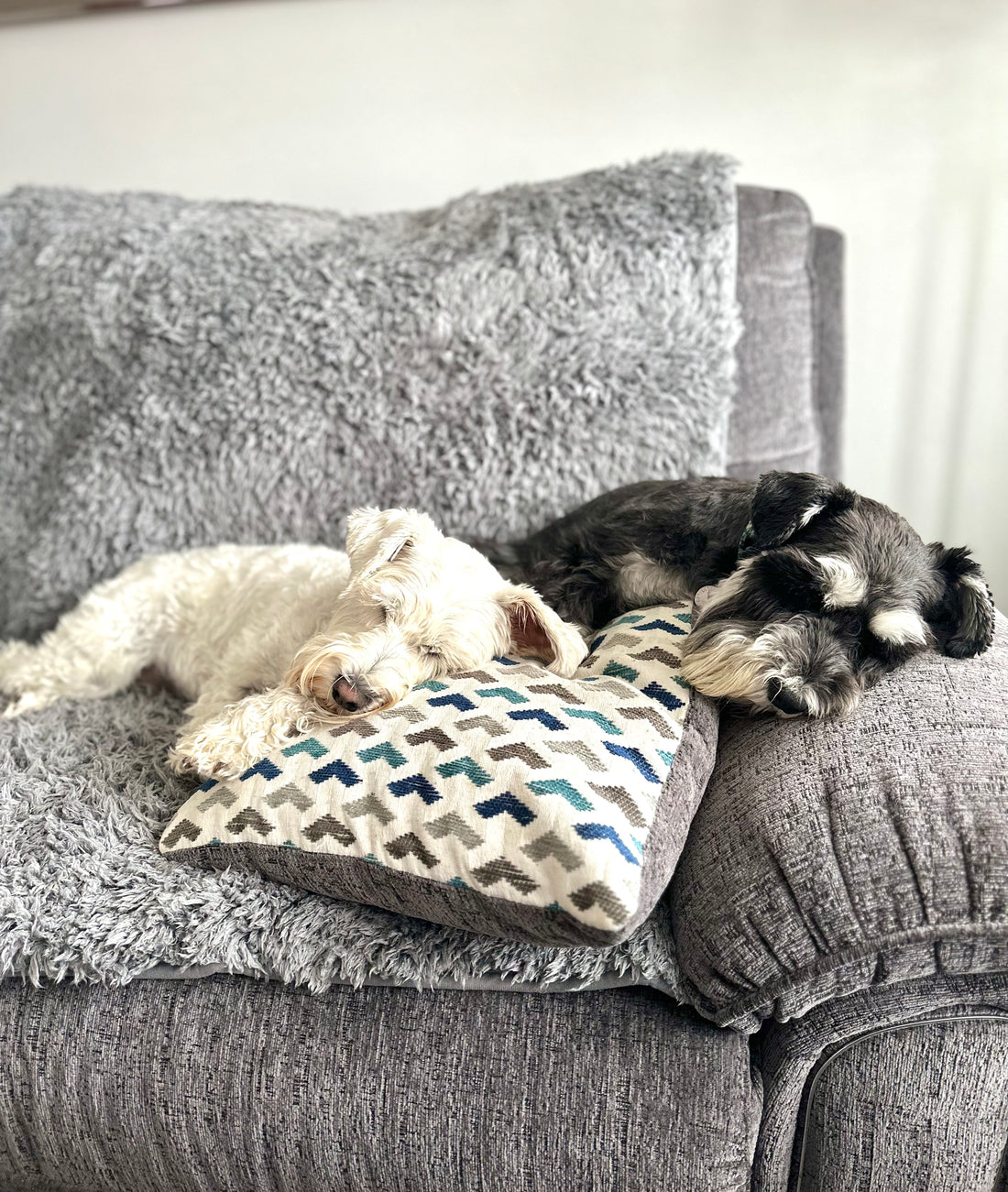Introduction
Separation anxiety is a common behavioural issue that many dogs experience when they are left alone. It can manifest in various ways, including excessive barking, destructive behaviour, house soiling, and even self-injury. As pet owners, witnessing our beloved furry friends suffer from separation anxiety can be distressing. However, it's important to remember that there are positive strategies and techniques we can employ to help our dogs cope with this condition.
In this blog post, we will explore the causes of separation anxiety, delve into the main content of positive strategies for managing separation anxiety in dogs, and conclude with a summary of key takeaways. We will also address frequently asked questions to provide comprehensive guidance on this challenging issue.
Main Content
Understanding Separation Anxiety in Dogs
Separation anxiety in dogs is a behavioural condition characterised by fear or distress when the dog is separated from their owners or left alone. It is more prevalent in certain breeds and can develop due to a variety of factors, including past traumatic experiences, changes in the household routine, or lack of proper socialisation. Dogs are pack animals by nature and thrive on companionship, making it challenging for them to adjust to extended periods of solitude.
Positive Strategies for Coping with Separation Anxiety
Gradual Desensitisation: Gradually expose your dog to being alone for short periods and slowly increase the duration over time. Start by leaving them alone for just a few minutes and reward calm behaviour. Repeat this process, gradually building up to longer intervals. This technique helps your dog develop a sense of security and comfort when alone.
Create a Safe Space: Designate a specific area in your home as a safe space for your dog. This can be a crate, a gated-off area, or a room with their bed, toys, and familiar scents. Ensure the space is comfortable, secure, and associated with positive experiences. Encourage your dog to use this area voluntarily and reinforce it as a safe retreat.
Positive Reinforcement: Use positive reinforcement techniques to reward your dog's calm behaviour. Offer treats, praise, or playtime when they exhibit relaxed and independent behaviour. Associating positive experiences with being alone helps them form positive associations and reduces anxiety.
Counterconditioning: Counter-conditioning involves changing your dog's emotional response to being alone by associating it with positive experiences. For example, before leaving, give them a special treat or a favourite toy that they only receive during these times. This creates anticipation and excitement, gradually replacing anxiety with positive anticipation.
Calming Aids: Consider using natural calming aids, such as pheromone diffusers, music specifically designed for dogs, or anxiety wraps. These aids can help create a soothing environment and promote relaxation in your dog.
Seek Professional Help: If your dog's separation anxiety persists or worsens despite your efforts, consult with a professional dog trainer or a veterinarian who specialises in behaviour. They can provide tailored advice, recommend additional strategies, or suggest behaviour-modifying medications if necessary.
Mental and Physical Stimulation: Provide mental and physical enrichment activities to keep your dog engaged and occupied. Puzzle toys, interactive feeders, and chew toys can help divert their attention and alleviate anxiety. Regular exercise and play sessions before leaving can also tire them out and make them more relaxed during alone time.
Enrichment Items: Alleviating Separation Anxiety
Enrichment items play a crucial role in keeping dogs mentally stimulated and engaged, which can significantly help alleviate separation anxiety. They provide an outlet for their natural instincts and can help redirect their focus from anxious behaviours to more positive and calming activities. Let's explore some popular enrichment items, including snuffle enrichment items, balls, mats, and snuffle snakes, and how they can assist dogs with separation anxiety.
Snuffle Enrichment Items Snuffle enrichment items, such as snuffle mats and snuffle balls, are designed to tap into a dog's natural foraging instincts. These items typically consist of a mat or ball with various fabric strips or pockets that hide treats or kibble. Dogs are then encouraged to use their nose and paws to search for and extract the hidden food.
Snuffle enrichment items can be highly effective in reducing separation anxiety because they engage a dog's senses and provide mental stimulation. When a dog is engrossed in searching for treats, their attention is diverted from their anxious thoughts. This not only keeps them occupied but also provides a sense of accomplishment and satisfaction.
Using snuffle enrichment items before leaving the house can create a positive association with alone time. It becomes a game that dogs look forward to, as they know they will have an exciting and rewarding activity to engage in while their owners are away. This positive reinforcement helps reduce anxiety and keeps their minds occupied in a productive way.
Balls Balls are classic enrichment items that have long been popular among dogs. They come in various sizes, textures, and styles, providing a range of options to suit different breeds and preferences. Playing fetch or engaging in interactive games with balls helps dogs burn off excess energy, release stress, and redirect their focus away from anxious thoughts.
Before leaving, spending quality time playing with your dog using a ball can tire them out physically and mentally. It's important to choose appropriate toys that are safe and durable, ensuring they don't pose any choking hazards or cause unnecessary frustration. Interactive balls, such as treat-dispensing ones, can add an extra layer of mental stimulation, engaging their problem-solving skills while keeping them entertained.
Mats and Snuffle Snakes Mats and snuffle snakes are another type of enrichment item that can aid in alleviating separation anxiety. These items have various pockets or flaps where treats or food can be hidden. Dogs are then encouraged to use their paws, nose, and tongue to search for and retrieve the hidden goodies.
The textured surfaces of mats and snuffle snakes provide a tactile and engaging experience for dogs. They can spend considerable time and mental energy investigating every nook and cranny, which distracts them from their anxious thoughts. These items stimulate their senses, promote mental focus, and offer a calming and rewarding activity.
When incorporating mats or snuffle snakes into your dog's routine, it's essential to supervise their use initially to ensure your dog is comfortable and safe with the item. As they become more familiar and confident, you can introduce these items before leaving, making them part of the routine that signals alone time.
Enrichment items such as snuffle enrichment items, balls, mats, and snuffle snakes can be effective tools in alleviating separation anxiety in dogs. These items engage their natural instincts, provide mental stimulation, and divert their attention away from anxious behaviours. By incorporating these enrichment items into their routine, dogs can develop positive associations with alone time and experience a sense of fulfilment and engagement.
Remember to choose enrichment items that are safe, durable, and suitable for your dog's size and preferences. Supervise their use initially and gradually introduce them as part of their alone time routine. With the right combination of enrichment items and positive reinforcement, you can help your dog feel more relaxed, content, and less anxious when left alone.
Conclusion
Separation anxiety can be a distressing experience for both dogs and their owners. However, with patience, consistency, and positive strategies, it is possible to help our furry friends overcome this condition. Gradual desensitisation, creating safe spaces, positive reinforcement, mental and physical stimulation, counter-conditioning, calming aids, and seeking professional help when needed are all valuable tools for assisting dogs with separation anxiety.
Remember that each dog is unique, and what works for one may not work for another. It may take time to find the most effective strategies for your dog, so be patient and persistent in your efforts. By embracing positive techniques, you can help your beloved companion feel more secure, relaxed, and happy when left alone.
FAQ
Q1: How long does it take for a dog to overcome separation anxiety?
A1: The time it takes for a dog to overcome separation anxiety varies. It depends on the severity of the anxiety, the dog's temperament, and the consistency of the training. It can take weeks or even months of dedicated effort to see significant improvements. Be patient and continue implementing positive strategies.
Q2: Can separation anxiety be prevented in puppies?
A2: While some puppies may be more prone to separation anxiety than others, there are steps you can take to help prevent it. Gradually introduce your puppy to alone time, provide them with plenty of positive experiences during separations, and ensure they have a comfortable and secure space. Early socialisation and training can also help reduce the likelihood of separation anxiety.
Q3: Is medication necessary for treating separation anxiety?
A3: Medication is not always necessary for treating separation anxiety in dogs. Positive training techniques and environmental modifications can often alleviate symptoms. However, in severe cases or when other methods have proven ineffective, a veterinarian may prescribe medication to help reduce anxiety and support behaviour modification efforts.
Q4: Can hiring a dog walker or pet sitter help with separation anxiety?
A4: Hiring a dog walker or pet sitter can be beneficial for dogs with separation anxiety. Regular exercise and human interaction during the day can help alleviate stress and provide mental stimulation. Ensure that the dog walker or pet sitter is knowledgeable about separation anxiety and can follow any specific instructions for managing the condition.
Q5: Can changes in routine worsen separation anxiety?
A5: Yes, sudden changes in routine can potentially worsen separation anxiety in dogs. Dogs thrive on predictability and structure. Gradual changes and maintaining a consistent routine can help reduce anxiety. If changes are unavoidable, ensure that you implement the positive strategies mentioned earlier to help your dog adjust.
By implementing these positive strategies, seeking professional guidance when needed, and showing patience and understanding, you can assist your dog in overcoming separation anxiety and improve their overall well-being. Remember, a calm and contented dog is a happy companion.

